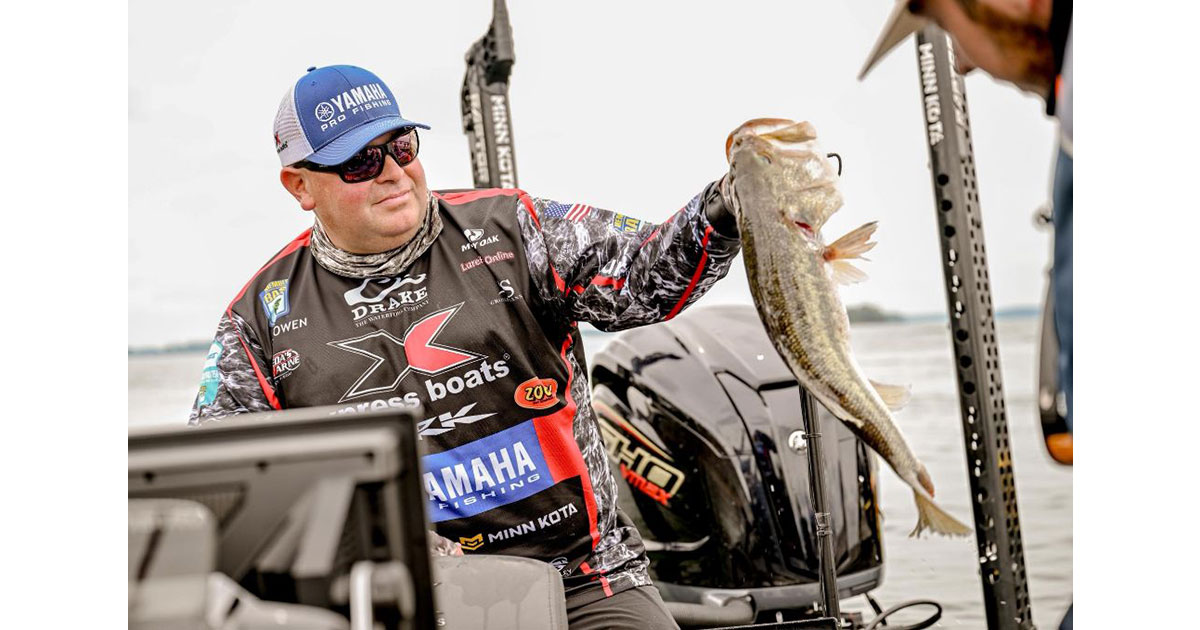- Details
BFHOF Report
The Bass Fishing Hall of Fame’s Board of Directors is again providing financial support to numerous conservation projects that will benefit grassroots efforts to improve the sport.
Over the past six years, the BFHOF has provided grants totaling over $127,000 to local bass fishing clubs and other organizations working with state fishery management agencies for various conservation projects.
“Thanks to our substantial fundraising success this year, we are prepared to offer nearly $20,000 in additional donations beyond our traditional conservation grants,” said BFHOF conservation committee chair Gene Gilliland. “We realized that there are a host of projects that don’t fit into the traditional bass club/agency partnership model. These groups have been selected for their foresight and commitment to improving the sport with boots-on-the-ground sweat equity.”
- The Hall is supporting the American Fisheries Society Southern Division Reservoir Committee Jenkins Scholarship Endowment. The Scholarship is intended to provide financial assistance to graduate students conducting reservoir-related fisheries research who show exceptional progress in their research, education, and professional endeavors. This is a five-year commitment that will benefit both bass fishing and other freshwater fishing opportunities.
Five additional fishing organizations receiving Bass Fishing Hall of Fame donations in 2025 to enhance and preserve bass fishing were made possible by the Hall’s partnership with the Costa Compete + Conserve program. They include: - Friends of Reservoirs, an organization dedicated to protecting, restoring and enhancing fish habitat in reservoir systems, was awarded funds for their Small Grants program, that supports smaller-scale habitat projects that bass clubs or friend groups can accomplish in a single season.
- The Pennsylvania Wildlife Leadership Academy’s PA BASS summer camp, that focuses on teaching teens about bass ecology and warm water conservation. PA BASS continues to spark passion for fisheries biology and instill a sense of stewardship in the next generation of conservation leaders.
- The Texas Bass Brigade is a unique educational program designed to educate youths from ages 13 to 17 about aquatic ecosystems and natural resource management and empower attendees with leadership skills and knowledge in wildlife, fisheries, and land stewardship. The BFHOF donation will support tuition for several students attending the 2026 Bass Camp.
- Mighty River Recovery, a Florida organization dedicated to ending the continued decline of the St. Johns River, while working to organize and unify outdoor enthusiasts. The Hall’s donation will support the Citizen Enclosure Project where volunteers assist with fencing areas of the river to allow the regrowth of essential native aquatic vegetation.
- Heroes on the Water, an organization providing free outdoor programs for U.S. active-duty military, veterans, law enforcement officers, first responders and their families, was awarded funds to bolster their kayak bass fishing programs.
In addition to the above donations, the Hall was an important sponsor of the 2025 Black Bass Symposium in San Antonio in August. This was a meeting of state fishery biologists, university researchers, private water managers, media professionals, and anglers sharing information and ideas to plot a course for black bass management in the future.
The Bass Fishing Hall of Fame will be issuing a request for proposals for 2026 Conservation Grants in January as well as soliciting nominations for inductees into the Hall itself. The Hall will hold its annual induction dinner on Thursday, Sept. 24, 2026, at Johnny Morris’ Wonders of Wildlife National Museum and Aquarium in Springfield, Mo. There will also be a concurrent auction (visit www.BassFishingHOF.com for details) as part of the annual “Celebrate Bass Fishing Week “with funds raised going to assist the Hall in funding conservation grants such as these and other worthy endeavors benefiting the sport of bass fishing.
- Details
Seaguar Report

Summertime is well known as an excellent time for topwater action in the bass fishing world, but autumn might be even better.
As the weather starts to cool at night and the baitfish begin to move, fishing a topwater bait in the fall can be some of the year's best action.
It's a time of year when the feeding frenzy on the surface can last all day, and that's why it's one of the preferred ways for Bassmaster Elite Series pros Stetson Blaylock and Bill Lowen to fish as summer wanes and turns into fall.
Each approach the season with similar thoughts on what they look for, but have learned a few tricks along the way to get more action out of their topwaters to get more bites. They each shared some insight and topwater secrets for fall bass fishing.
What to Look For
As bass feed more heavily in the cooler water temperatures, the most significant factor is finding that food source, whatever that may be in your home waters. No matter what bait you use or how you work it, fishing in less-than-ideal places will surely hamper your success.
"The biggest thing in the fall is simple: find the bait," said Lowen. "It's the most important thing, and when I'm looking, whether it's in a creek or whatever, I won't even start fishing until I find baitfish. This can be done with your electronics, but using your eyes and looking for fish activity has been crucial for years and is still one of the best ways to look for baitfish."
- Details
BFHOF Report
The Bass Fishing Hall of Fame (BFHOF) has awarded scholarships under its Fishery Management Scholarship Program.
The program aims to provide financial support and encouragement to high school and college bass anglers pursuing careers in fields that will directly contribute to healthy fisheries, essential access, and clean rivers, lakes and reservoirs, consistent with the BFHOF’s mission.
The eight selected applicants will each receive $2,500 to pursue their studies. The recipients include:
- Reagan Davis -- Carleton University
- Cole Hofstadt -- Bemidji State University
- Noah Lieberman -- Missouri State University
- Colby Munrow -- Arkansas Tech University
- Kate Norrid -- Auburn University
- Garrett Page -- South Georgia State College
- Riley Schuldt -- University of Wisconsin, Stevens Point
- Alexa Wasankari -- Clemson University
“The response to this program continues to be exceptional,” said incoming BFHOF Board President Bruce Stanton. “We have a dedicated Conservation/Education Committee, led by Board Member and BFHOF inductee Gene Gilliland, and they gave great care in choosing the recipients. Based on the results achieved by previous years’ grantees, and their long-term career goals, we know that our supporters made a difference that aligns perfectly with the Hall’s mission of celebrating, promoting, and preserving bass fishing. Healthy fisheries are a prerequisite for a healthy sport.”





